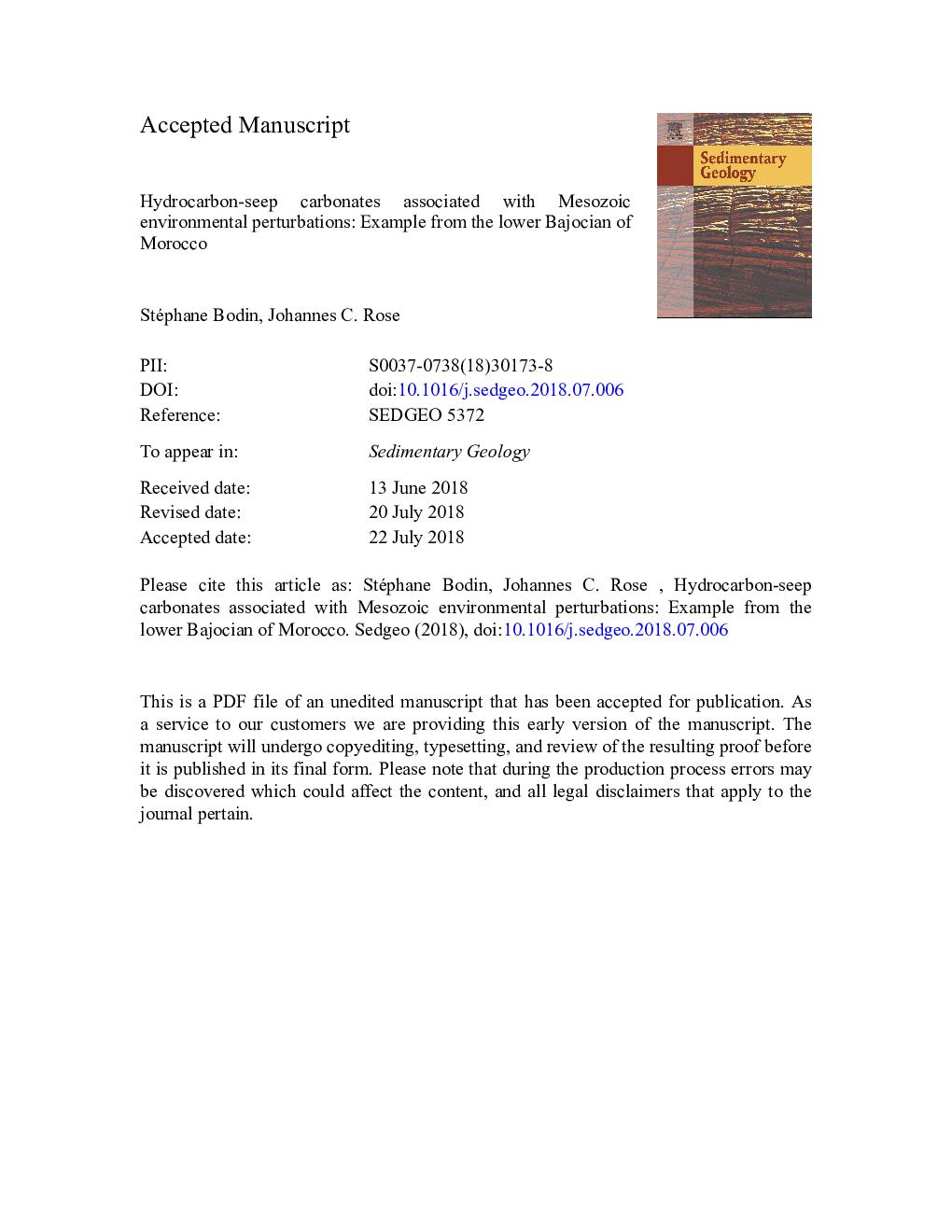| Article ID | Journal | Published Year | Pages | File Type |
|---|---|---|---|---|
| 8908455 | Sedimentary Geology | 2018 | 57 Pages |
Abstract
Similar seep carbonates are observed regionally within the Agoudim III Member in the highly subsiding Central High Atlas troughs. A relationship between these seep carbonates occurrence and the late Early Bajocian global environmental perturbation can be deduced, as this latter has led to the deposition of a relatively organic-matter rich sedimentary sequence in these troughs via seawater eutrophication. The decomposition by bacterial activity of this organic matter, aided by rapid burial rates, has led to the generation of alkaline-rich fluids promoting the precipitation of the seep carbonates. A similar relationship between transient environmental perturbations and seep carbonates occurrence is observed in numerous Mesozoic examples and can be explained by the fact that hydrocarbon-seeps are supply-limited systems. Transient deviation from the Mesozoic greenhouse climate norm, either toward hothouse or coldhouse climates, favours the deposition of organic-rich sediments or transient methane storage, respectively, hence increasing the likelihood for the formation of hydrocarbon seepage.
Keywords
Related Topics
Physical Sciences and Engineering
Earth and Planetary Sciences
Earth-Surface Processes
Authors
Stéphane Bodin, Johannes C. Rose,
